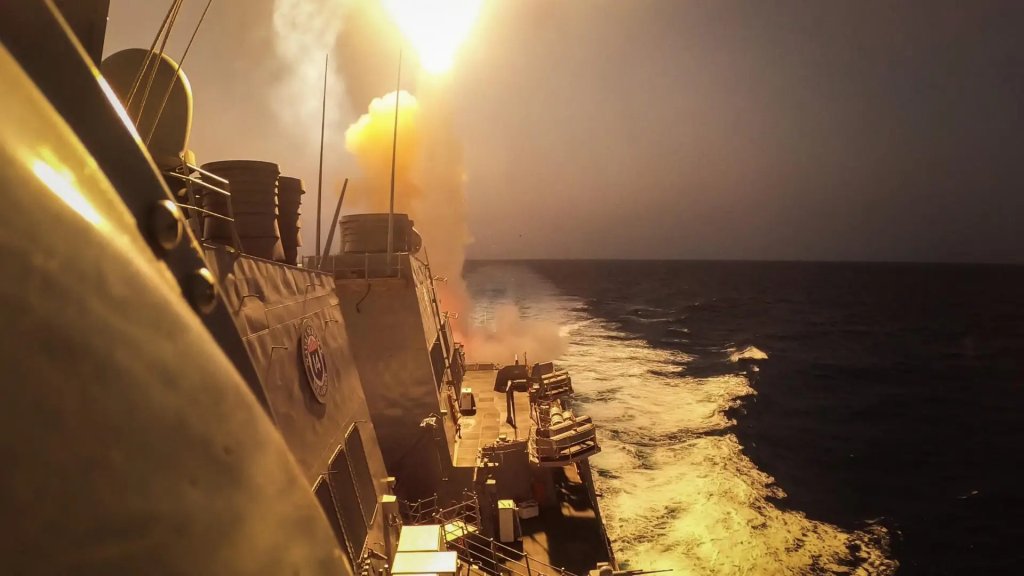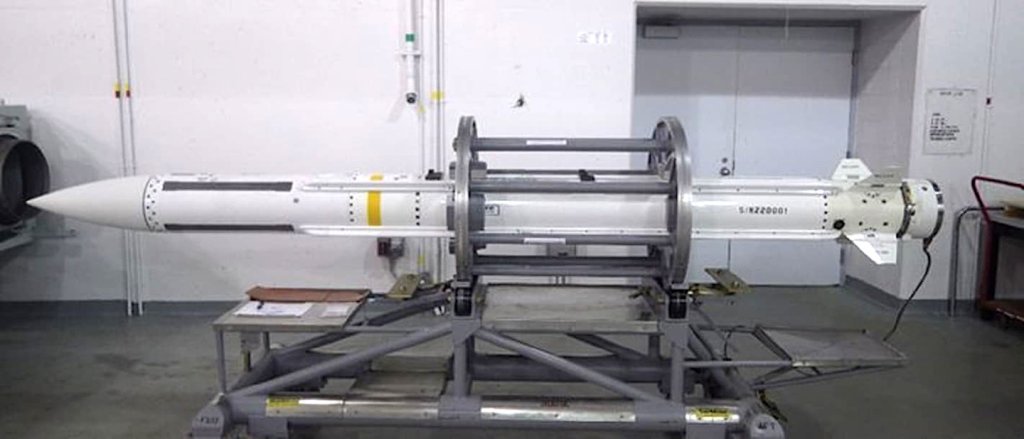The U.S. Navy, together with 11 of America’s allies, is working to develop a follow-on to the Block 2 version of the RIM-162 Evolved Sea Sparrow Missile (ESSM). The ESSM is an air defense staple on a wide array of American and foreign naval vessels, but concerns about an increasingly complex aerial threat ecosystem are now driving interest in a missile with improved capabilities.
The Office of Naval Research (ONR) posted a notice online yesterday inviting prospective contractors to a meeting in October to discuss what is currently described as a “Next Significant Variant (NSV) missile system” to succeed the ESSM Block 2. NavalX, a technology incubator within ONR charged with fostering innovation for the Navy and Marine Corps, is currently partnered with the NATO SEASPARROW Project Office (NSPO) on this effort. The NSPO consortium, which dates back to 1968, currently includes the United States, Australia, Belgium, Canada, Denmark, Germany, Greece, the Netherlands, Norway, Portugal, Spain, and Turkey. Despite the name, Australia is not a member of NATO, but is one of America’s top allies. The U.S. arm of NSPO falls under Naval Sea Systems Command’s (NAVSEA) Program Executive Office for Integrated Warfare Systems (PEO IWS).

The ESSM is a short-to-medium range surface-to-air missile primarily designed to offer an additional layer of defense against anti-ship cruise missiles (ASCM), but that is also capable of engaging other aerial threats. The baseline semi-active radar-guided Block 1 ESSM, which evolved from the earlier RIM-7 Sea Sparrow surface-to-air missile, itself based on the AIM-7 Sparrow air-to-air missile, was developed in the 1990s and entered service in the early 2000s. The Block 2 version, which began entering service in the early 2020s, features a much-improved seeker with semi-active and active modes, the latter of which does not require a radar on the launching ship to ‘illuminate’ the target. It also has a data link so the missile can receive targeting updates after launch, an especially useful capability for longer-range engagements.

“The NSPO is exploring technology to be incorporated into a Next Significant Variant (NSV) missile system,” yesterday’s notice says. “This successor to the ESSM Block 2 must be able to engage current and future threats while maintaining existing quad-pack sizing with a 10” missile diameter.”
The ESSM’s ability to be quad-packed into Mk 41 Vertical Launch System (VLS) cells, giving ships valuable added magazine depth, is another one of the missile’s key features. Ships equipped with Mk 48, Mk 56, or Mk 57 VLS arrays, as well as deck-mounted Mk 29 box launchers, can also use them to fire ESSMs.



“To develop the NSV missile system, the NSPO will lean heavily on digital engineering and model-based systems engineering to communicate missile designs and requirements efficiently among consortium nations and industry partners in a shared development environment. These tools will be used to evaluate weapon systems and missile technologies through a design alternative evaluation process,” the ONR notice explains. “White papers are expected to include all aspects of the NSV missile including seeker technologies, autopilot, computing stack, internal communications, rocket motor alternatives, warhead design, missile to missile communications, data links, combat system integration, etc.”
No specific requirements are laid out in the notice. A multi-mode seeker that incorporates an imaging infrared (IIR) capability is one feature commonly discussed in the context of future anti-air missiles. An IIR mode would be immune to electronic warfare jamming and would not be impacted by a target’s radar-absorbing or deflecting stealth features. As a passive seeker mode, it would also not pump out signals that a threat could detect to alert them that they are being targeted. A new highly loaded grain rocket motor could also offer extended range without changing the missile’s form factor. These are just some of the possible features that could be included in a successor to the ESSM Block 2.
The notice about the NSV missile system does say that “potential industry partners,” as well as “existing” ones, are welcome at the upcoming meeting on the NSV missile system, which would seem to at least leave open the possibility of a follow-on to the ESSM Block 2 that has a substantially different design.
“Drivers for development include stressing simultaneous engagement scenarios, the need to develop fully releasable technologies using open architecture standards for all consortium partners to openly share, and the need to maintain capability with current consortium systems to the greatest extent possible while limiting ship support,” the notice also says, without further elaborating.
It is worth noting here that the Block 2 variant of the ESSM was itself developed in response to what the Navy described as a need for improved “capability against the most stressing ASCM threats in challenging environments.”

Navy warships, as well as those belonging to other members of the NSPO consortium, now face an aerial threat matrix that includes even more advanced supersonic, as well as hypersonic ASCMs. There is also the increasing likelihood that they could be layered in with anti-ship ballistic missiles and multiple tiers of drones, creating additional complexity for defenders. While an ESSM successor would not be tasked with ballistic missile defense, improved capability against other threats would give the crew of a ship greater flexibility to respond to an incoming complex attack. The Navy has been trying to accelerate work on high-power microwave directed energy weapons for the same general reasons.
The Navy and a number of other NSPO members are acutely aware of how the maritime threat ecosystem is evolving already from defending against cruise and ballistic missiles and drones launched by Iranian-backed Houthi militants in Yemen while sailing in and around the Red Sea in the past two years or so. Existing ESSM variants have been employed in the course of those operations, but their role has not been touted to any significant degree, unlike a number of other naval surface-to-air missiles.

U.S. lessons learned from naval operations against the Houthis, as well as in the defense of Israel from Iran on multiple occasions since April 2024, have underscored the importance of magazine depth, even in the face of attacks involving relatively modest volumes of threats. Those experiences have also highlighted the vital need for at-sea reloading capabilities. Navy ships would be subjected to a wider array of threats in substantially larger volumes, and would burn through interceptors at a higher rate, in any future high-end fight, such as one against China in the Pacific.
Overall, much remains to be learned about the plans for a follow-on to the Block 2 ESSM, but there are clear threat drivers that would prompt a desire for a successor.
Contact the author: [email protected]
